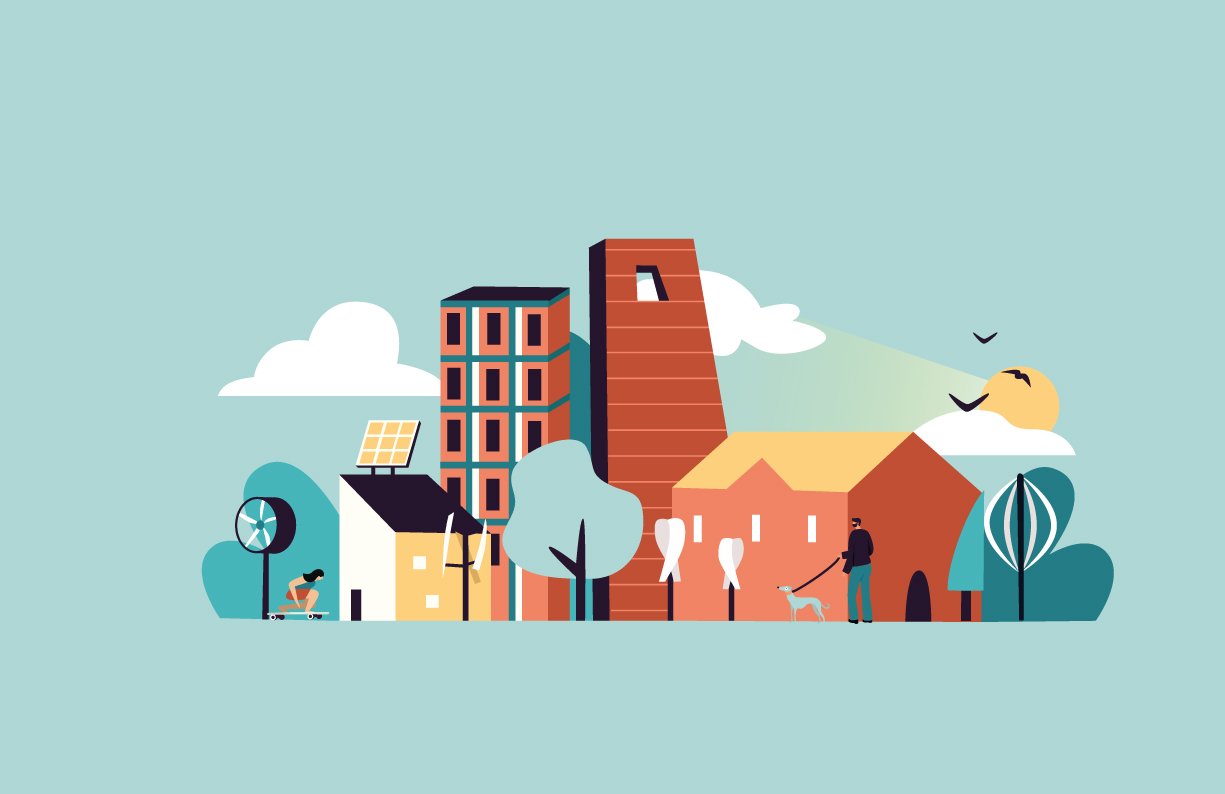Windfall Benefits
Turbine design updates could make mini wind farms an urban reality.
Electricity consumers are increasingly becoming “prosumers” - producers and consumers. Much like harvesting solar energy, individuals, communities, and small businesses who found themselves in windy spots are exploring ways to harvest wind power to meet their own needs.
When you think of wind energy, you probably picture colossal turbines with dangerous blades and massive wind farms. But today, products such as compact, bladeless turbines, and EU-funded rooftop turbines are maturing and entering the market. These lightweight microturbines are often quieter, quick to respond to wind changes, require lower wind speed to generate power, have minimal environmental impacts, and are harmless to wildlife.
Wind turbines are not only getting smaller, but they are also becoming more aesthetically pleasing. Designer and entrepreneur Joe Doucet has created a concept microturbine that could be integrated into the cityscape. This new design might look like a kinetic art installation, but in reality it’s a highly adaptive piece of technology that is scalable based on demand -- an 8-foot-tall wall made of as few as 25 rods would be enough to support the energy needs of an average family. The designer also envisions installations along the highways, reaping the extra wind boost from trucks. Spanish startup Vortex is building turbine that’s not actually a turbine, as it harvests wind energy from oscillation instead of rotation. The innovative design targets the residential market, warranting drastically lowered manufacturing, operation, and maintenance costs.
Global demand for renewable energy is growing at an exponential rate. As of 2020, wind supplied about 5% of worldwide electrical generation and about 2% of global energy. However, in early 2022, wind was recorded to be second-largest source of U.S. electricity generation, making up 19% of all electricity generation in the country, second only to natural gas. The renewable energy market is projected to double its size by 2030, and wind will play the biggest part. Perhaps some of that expansion could happen in symbiosis with the places we live and work: in addition to lowered carbon footprints and energy bills, businesses in windy cities may also expect diversifying energy in wind to create value, especially if adopting energy conscious actions will further connect them with their customers’ beliefs. Windy locales like Boston and Buffalo, we’re looking at you.
Sources: U.S. Department of Energy | U.S. Energy Information Administration (April 14, 2022) | Fast Company (October 19, 2021) | Vortex Bladeless | Image: Laura Pittaccio


